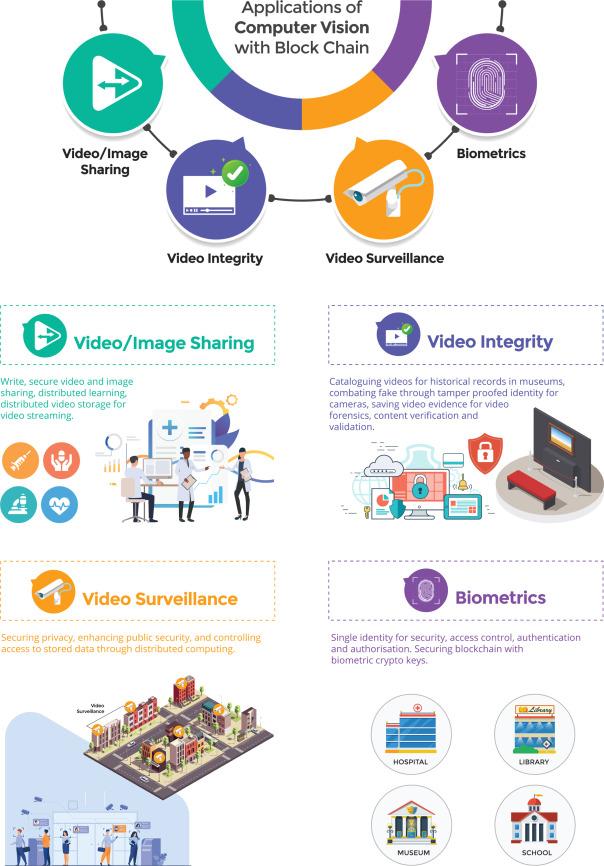How Implementing Blockchain Transforms Educational Institutions: A Complete Guide
Introduction: The Dawn of Blockchain in Education
In the rapidly evolving landscape of technology,blockchain is emerging as a transformative force across various industries—including education. As educational institutions strive for enhanced security, transparency, and efficiency, blockchain technology promises innovative solutions that can revolutionize academic administration, credential verification, and student engagement. In this guide, we’ll explore how implementing blockchain transforms educational institutions, presenting you wiht actionable insights, key benefits, and practical steps for triumphant adoption.
What is Blockchain?
Blockchain is a decentralized, digital ledger technology that securely records transactions and data across multiple computers. It is indeed immutable, clear, and tamper-proof, making it an ideal solution for any system requiring trustworthy record-keeping and verification. In education, blockchain finds applications in student records, diplomas, intellectual property management, and more.
Why Educational Institutions Should Consider blockchain
- Security: Protects sensitive data from unauthorized access and cyber threats.
- Transparency: Provides clear, auditable records of academic achievements and administrative processes.
- Efficiency: Streamlines verification processes, reducing administrative workload and manual errors.
- Trust: Instills confidence among students, employers, and regulators through verifiable credentials.
- Cost Reduction: cuts costs associated with traditional certification and record maintenance.
Key Benefits of Blockchain in Education
1. Immutable Academic Records
Academic credentials, transcripts, and certificates can be stored on blockchain, making them tamper-proof and instantly verifiable. Students gain full ownership of their achievements, while employers and institutions can easily verify credentials within seconds.
2. Streamlined Student Identity Management
Blockchain simplifies student enrollment and identity verification, offering a single, portable digital identity throughout the learner’s academic journey, regardless of institution or geography.
3. Enhanced Credential Verification
Traditional paper-based diplomas are prone to forgery. Blockchain-based credentials ensure authenticity,reduce fraud,and save time for both graduates and recruiters during the verification process.
4. Smart Contract-based Administration
Using smart contracts, educational institutions can automate processes such as fee payments, scholarship distribution, and self-executing agreements between stakeholders, increasing administrative efficiency.
5. Facilitating Lifelong Learning and Micro-Credentials
Blockchain can store diverse learning achievements, including micro-credentials and badges from online courses, enabling continuous, verifiable learning beyond traditional degrees.
practical Applications of Blockchain in Educational Institutions
-
Issued Diplomas and Certificates:
- Instant verification by employers or other academic institutions
- Eliminates fake degrees and forged certificates
-
Student Record-Keeping:
- Unified lifelong learning record for each student
- Secure sharing and updating of academic histories
-
Online Exams & cheating Prevention:
- Transparent and auditable processes for exam results
- Reduction in academic dishonesty
-
Digital Badges & Micro-Credentials:
- Verify competencies in specialized skills
- Stackable achievements for diverse learning pathways
-
Intellectual Property Management:
- Secures research output and attributions
- Ensures academic integrity and traceable citations
-
Funding, Grants, and Scholarship Management:
- Automated disbursement and tracking through smart contracts
Case Studies: Blockchain in Action within Education
MIT: Digital Diplomas
The Massachusetts institute of Technology (MIT) pioneered blockchain-secured digital diplomas, allowing graduates to receive tamper-resistant, instantly verifiable degrees. Employers can authenticate these records with ease, reducing administrative friction.
University of Nicosia: Blockchain-Based Academic Credentials
The University of Nicosia issues academic certificates via the Bitcoin blockchain. This forward-thinking move streamlines verification for global employers and graduate programs.
Holberton School: Secure Student Transcripts
Holberton School uses blockchain technology to issue and validate student transcripts, ensuring data integrity and providing students with lifelong access to their academic records.
Step-By-Step Guide to Implementing Blockchain in Educational Institutions
-
Identify Key Use Cases:
- start with credential verification, record-keeping, or digital identity management.
-
Choose the Right Blockchain Platform:
- Explore platforms like Ethereum, Hyperledger, or purpose-built educational chains.
-
Engage Stakeholders:
- Collaborate with IT staff, academic leaders, legal advisors, and student representatives.
-
Develop Smart Contracts:
- Work with blockchain experts to create secure, transparent workflow automation.
-
pilot and Test the System:
- Start small—issue blockchain certificates to a selected graduating class and gather feedback.
-
scale and Integrate:
- Expand to more records and functionalities, integrating with existing student data systems.
-
Educate and Train Users:
- Provide training sessions for administrative staff, faculty, and students on seamless usage and benefits.
-
Maintain Security and Compliance:
- Ensure compliance with data protection laws (GDPR, FERPA), and regularly update security protocols.
Challenges and Considerations
- Technical Expertise: Adequate knowledge is required for setup and maintenance.
- Change Management: Resistance from staff and students might occur; strong leadership and communication are key.
- data Privacy: Make sure to comply with local and international data privacy laws.
- Initial Investment: Upfront costs can be notable, but long-term savings and benefits are ample.
- Scalability: Ensure the chosen solution can grow with your institution’s needs.
First-Hand Experience: Insights from Early Adopters
Early adopters of blockchain in education report improved efficiency and higher levels of trust among stakeholders. Administrators highlight easier credential management and reduced fraud. Students appreciate control over their achievements and the ability to present credentials globally. While challenges exist, most agree that the long-term payoff justifies initial investments.
Conclusion: A New Era of Trust and Transparency
As blockchain technology redefines the future of education, institutions embracing this shift are not only enhancing data security and transparency but paving the way for innovative teaching and learning models.By implementing blockchain,educational institutions can unlock unmatched benefits—streamlining operations,building global trust,and empowering learners.As you plan your digital conversion journey, let blockchain guide your path to a smarter, more secure academic ecosystem.
ready to implement blockchain in your educational institution? Start small,learn from proven case studies,and build a resilient,future-proof education system—one block at a time.

